MARIANI’SVirtual
Gourmet
March
9, 2014
NEWSLETTER
HOME | BOOKS | ABOUT US | CONTACT
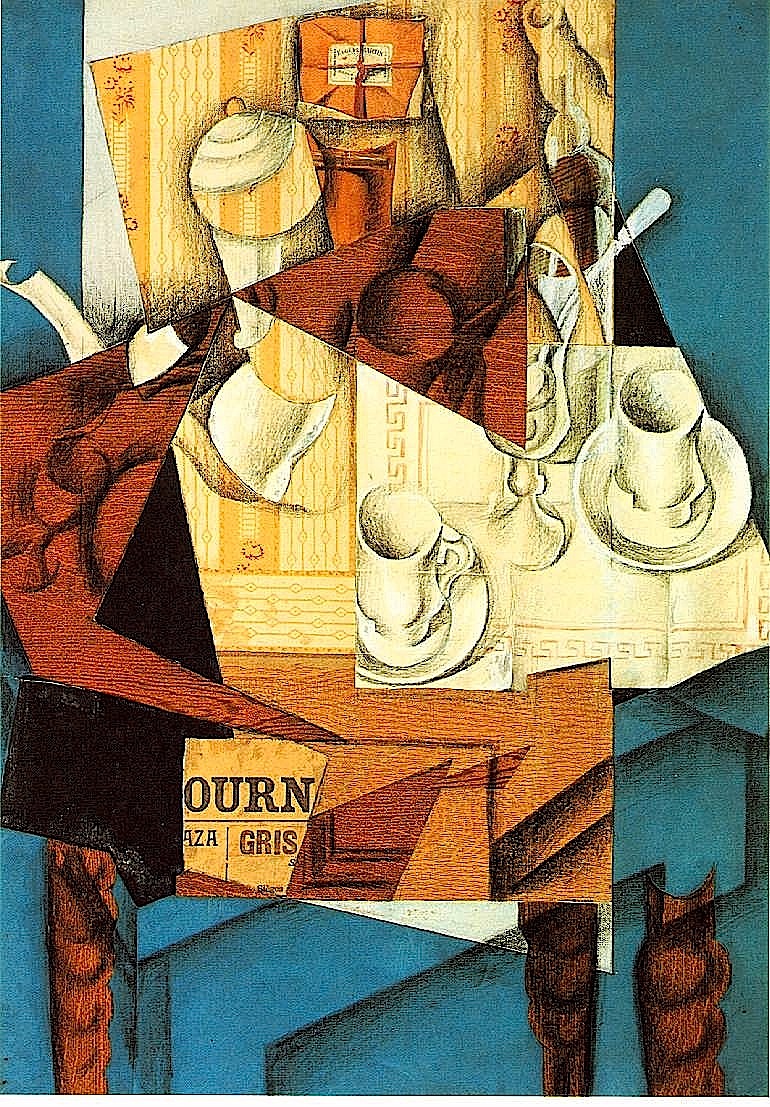
❖❖❖
THIS WEEK
ZURICH--BIG SWISS CITY WITH SMALL CITY CHARM
By John Mariani
NEW YORK CORNER
RISTORANTE MORINI
By John Mariani
NOTES FROM THE WINE CELLAR
Returning to Madeira
By Andrew Chalk
❖❖❖
ZURICH--BIG SWISS CITY WITH SMALL CITY CHARM
By John Mariani
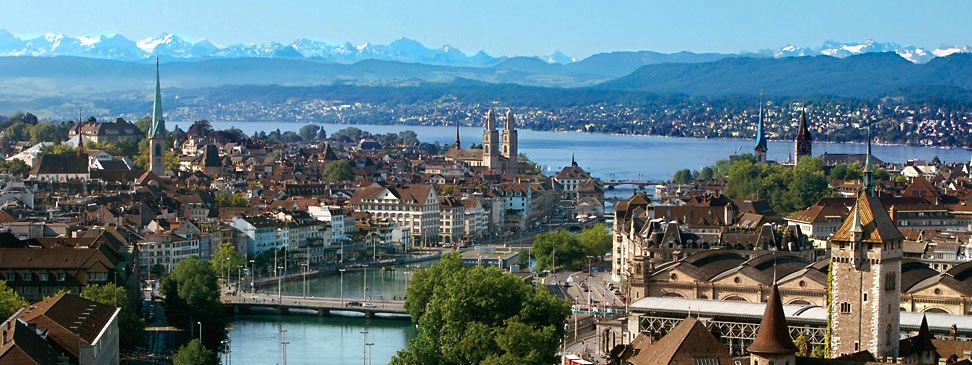
Make
sure you arrive in Zurich on a sunny day. I
did not, and its charms eluded me under a nasty
gray, drizzling sky. The Linmat River was
gray, the buildings were gray, the people were
gray, and my mood was brightened only when I
arrived at my hotel, the Bar au Lac, where
everything was bright, cheery and as hospitable as
the ever attentive Swiss can make it.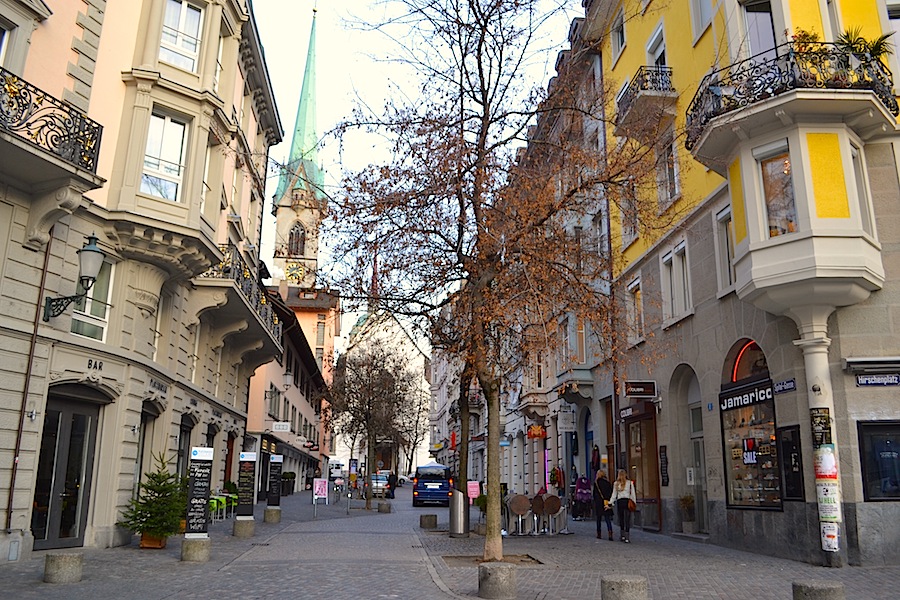
The
next day, however, Zurich was at its sunny
finest--the same broad river was as blue as the sky,
the buildings took on colors of tan, white, brown,
and pink, and the people of the city were out and
about, smiling with relief that the cold, wet winter
of yesterday had changed into the kind of day that
showed off the city at its most alluring.
Zurich is, as everything else in Switzerland, a city
that runs so efficiently that you don’t really need
a watch. The trains and trams I took in and
out of the city left with the precision of an
Olympic finish, within a split second of their
posted schedule. The streets were impeccably
clean, winding up the boutique- and
café-lined hillsides of the central historic
district, bound by Lake Zurich itself, whose size
has a magnificence rare in European inland waters.
More than one survey ranks Zurich as
a city with the best quality of life in the
world--its current unemployment rate is only 3.2
percent--as well as being the wealthiest in Europe.
Believe me, the two go hand in hand. Zurich is
very, very expensive. A ten-minute taxi ride
can easily cost 20 Euros (about $27), although it is
so easy to walk around the city center that they are
hardly necessary, and the trams are so dependable.
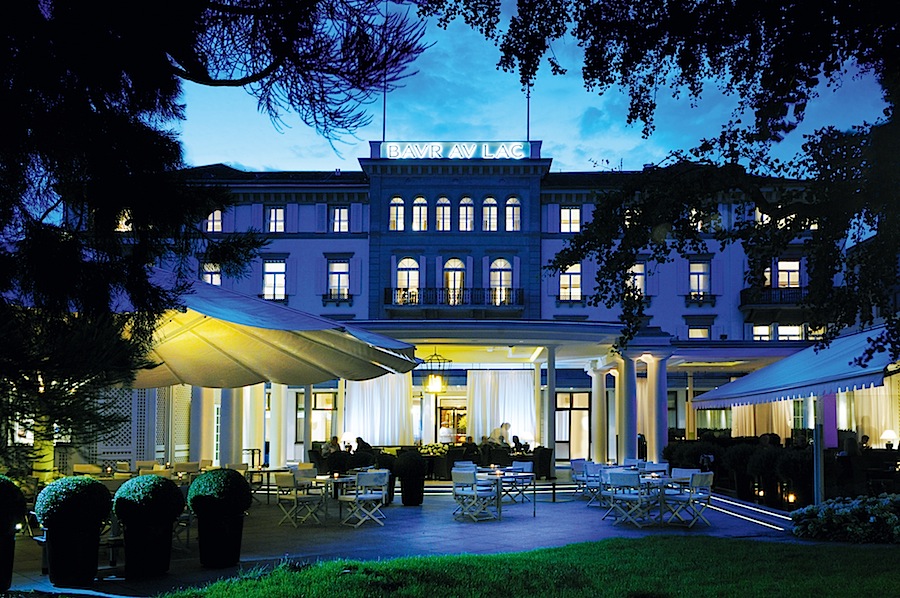 The Bar au Lac (left), is
considered Zurich’s grandest hotel, dating back to
1844 and still owned by the original family, so you
can imagine the international celebrities--from
Sophia Loren to Marc Chagall, from Alfred Hitchcock
to Brigitte Bardot--who have stayed there, along
with all those bankers and money men who provide the
city with its enormous wealth. (Stores of gold
bullion lie underneath the streets.)
The Bar au Lac (left), is
considered Zurich’s grandest hotel, dating back to
1844 and still owned by the original family, so you
can imagine the international celebrities--from
Sophia Loren to Marc Chagall, from Alfred Hitchcock
to Brigitte Bardot--who have stayed there, along
with all those bankers and money men who provide the
city with its enormous wealth. (Stores of gold
bullion lie underneath the streets.)
The
120-room hotel is just a block from the river, and
its terrace rooms offer a glorious view of the city
that shows how expansive it has grown over the past
decade. Rooms are wonderfully spacious, there
is comfort in every bed, sofa, and bath, and, after
a recent $50 million renovation, it is as ideally
lighted and decorated as five-star hotels need to be
in a highly competitive market for tourism and
business clients. 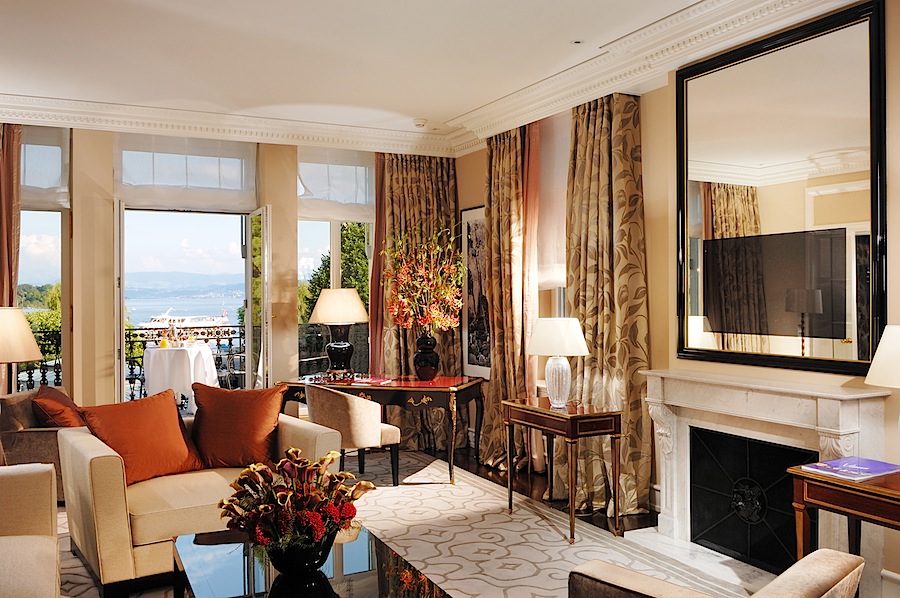
The concierges respond--in
several languages--to whatever large or small
request you can come up with, and it would be
considered a serious transgression if a staff member
failed to open a door or lead you to the restaurant.
In-room WiFi leaves a lot to be desired, however.
The
hotel has three restaurants: the Pavillon,
proudly sporting a new Michelin star; the Terrasse for
outdoor dining; and a casual, seductively lighted
spot named Rive
Gauche. I dined exceptionally well at
the elegantly appointed Pavillon (below),
including the lavish breakfast set out for guests
each morning. At dinner I enjoyed the
restrained modernity of a menu balanced between
European tradition and novel ideas like the
caramelized langoustine with salsify, honey, lemon
and vanilla, and a foie gras terrine with a cherry
“Pop Tart” pastry. The desserts are made with
the hotel’s own chocolate, including its signature
Chocolat 1844--a crunchy pie with chocolate mousse,
plum spirit and chocolate chips--and chocolates are
placed in your room at all hours of the day.
The wine list is solid, though I was surprised
at the meager number of Swiss wines in its pages.
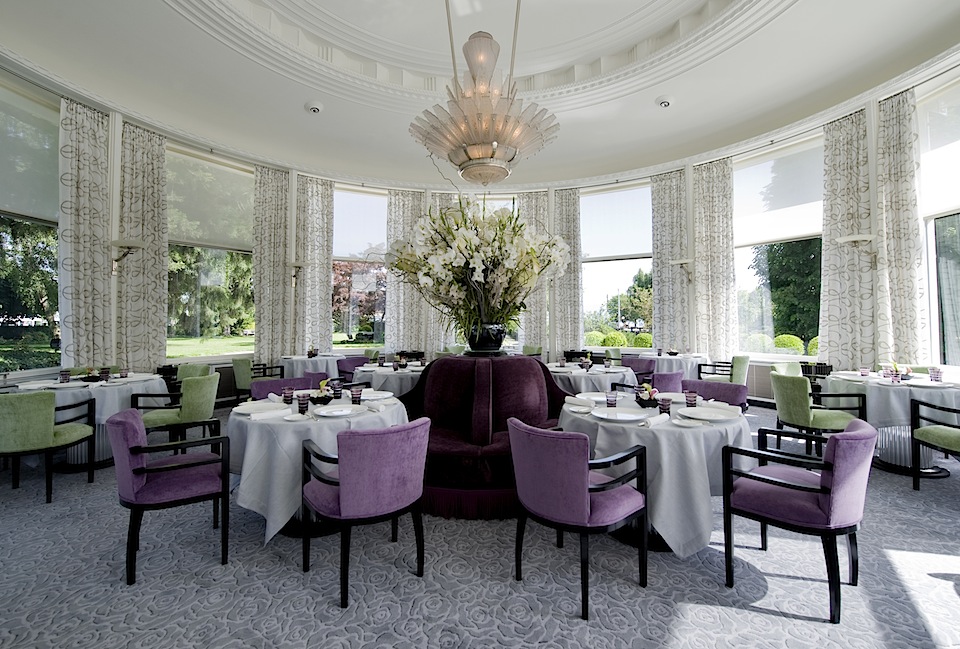 The menu at the
shadowy Rive Gauche runs from a “Smashing Pumpkins”
pumpkin cream soup to “Stingy lamb” chops (the name
must refer to the British rock star, not the size of
the portion). And the bartenders take cocktail
culture very seriously indeed.
The menu at the
shadowy Rive Gauche runs from a “Smashing Pumpkins”
pumpkin cream soup to “Stingy lamb” chops (the name
must refer to the British rock star, not the size of
the portion). And the bartenders take cocktail
culture very seriously indeed.
Over two days in Zurich I crisscrossed the Linmat to
visit the monuments and museums, which include the
hodgepodge Romanesque-Gothic-Baroque St. Peter, with
the largest clock face in Europe; the Zürich Museum of
Art, whose collections are
principally modern; and the Uhrenmuseum Beyer,
which aptly documents the history of timekeeping and
timekeepers. Spires and steeples abound, giving the
skyline a pretty punctuation.
Seeking a traditional Swiss restaurant, I was told
more than a few times that it is essential to eat
at Kronenhalle
(below),
which dates back to 1924, when Hulda and Gottlieb Zumsteg
took over the premises. Today, with an
astonishing amount of modern art--including works by
Picasso, Giacometti, Chagall, Bonnard, and many
others hung nonchalantly on the walls--Kronenhalle
looks very much like a chic pre-war brasserie, with
shiny brass, glowing crystal chandeliers, polished
mahogany, and crisp napery. That Kronenhalle has
been fashionable for nearly a century is evidenced
by a guest book with the names of Coco Chanel
and Yves Saint Laurent; James Joyce lived and died
in Zurich and dined here as well. John Irving set
scenes in the restaurant in his novel Until
I Find You.
I joined a friend for a late lunch and we were
seated in the main downstairs dining room at a table
beneath a Georges Braque Cubist painting. As
is the tradition in Swiss restaurants, a waitress
pulled up a serving table next to ours, took our
order and brought us steins of Swiss beer. And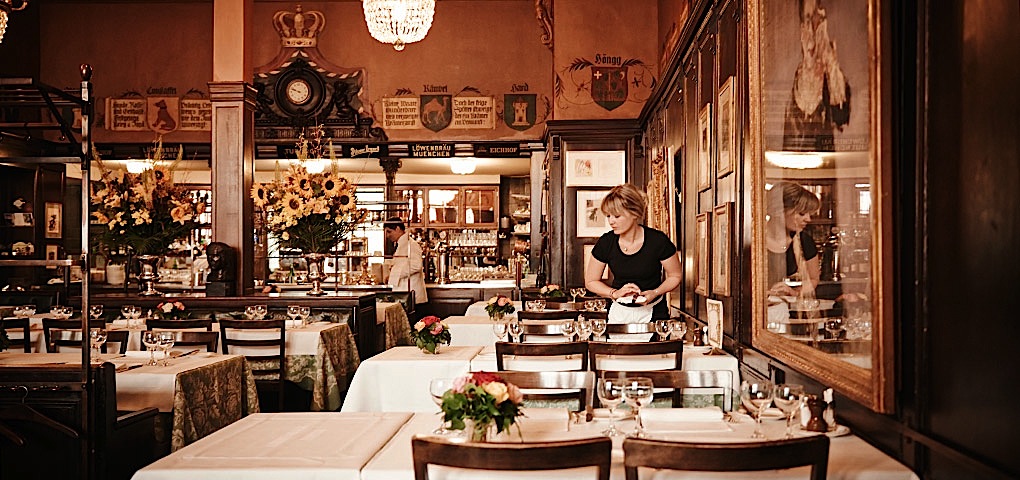 then we
enjoyed the very best Wiener Schnitzel I’ve ever
had--huge and overlapping the plate, buttery, crisp
as a potato chip, with tender, browned roesti
potatoes. Also superb was a lavish portion of pink
calf’s liver on a bed of sweet, caramelized onions.
It was one of those perfect meals that met
every expectation, and the atmosphere had a
timelessness I just sank into. It is unimaginable to
me not to dine at Kronehalle when I return to the
city.
then we
enjoyed the very best Wiener Schnitzel I’ve ever
had--huge and overlapping the plate, buttery, crisp
as a potato chip, with tender, browned roesti
potatoes. Also superb was a lavish portion of pink
calf’s liver on a bed of sweet, caramelized onions.
It was one of those perfect meals that met
every expectation, and the atmosphere had a
timelessness I just sank into. It is unimaginable to
me not to dine at Kronehalle when I return to the
city.
That
day the sun still shone and the city’s vitality was
visible everywhere along the riverside. And
though Zurich is Switzerland’s largest city, it has
the cast of a much smaller one that bears walking
through very old streets, circling back and around,
always back to the river and the lake. Just
pray for sunshine.
❖❖❖
NEW YORK CORNER
By John
Mariani
Photos by Anthony Jackson
 RISTORANTE MORINI
RISTORANTE MORINI
1167 MADISON
AVENUE (near
86th Street)
212-249-0444
ristorantemorini.com
It would be easy enough to say that, like Alain Ducasse, Gordon Ramsay, Nobu Matsuhisa and a dozen other culinary celebrities, Michael White long ago left his kitchen stoves behind in exchange for global entrepreneurship. But, in fact, at least with his New York Italian operations--Marea, Osteria Morini, Ai Fiori, Costata and now Ristorante Morini--you’ve still got a good chance of finding White in his chef’s coat, bounding from the kitchen and making sure everyone in the dining room is enjoying himself.
Ristorante
Morini, named after the Italian banker who in 1970
opened the great ristorante San Domenico in
Imola, Italy, where White learned his craft, is a
far more upscale version of his decidedly rustic
Osteria Morini downtown, with its brick walls,
wooden tables and copper utensils. The Upper
East Side demanded a more soigné style:
the restaurant is located on two levels done
in soft colors of mahogany and 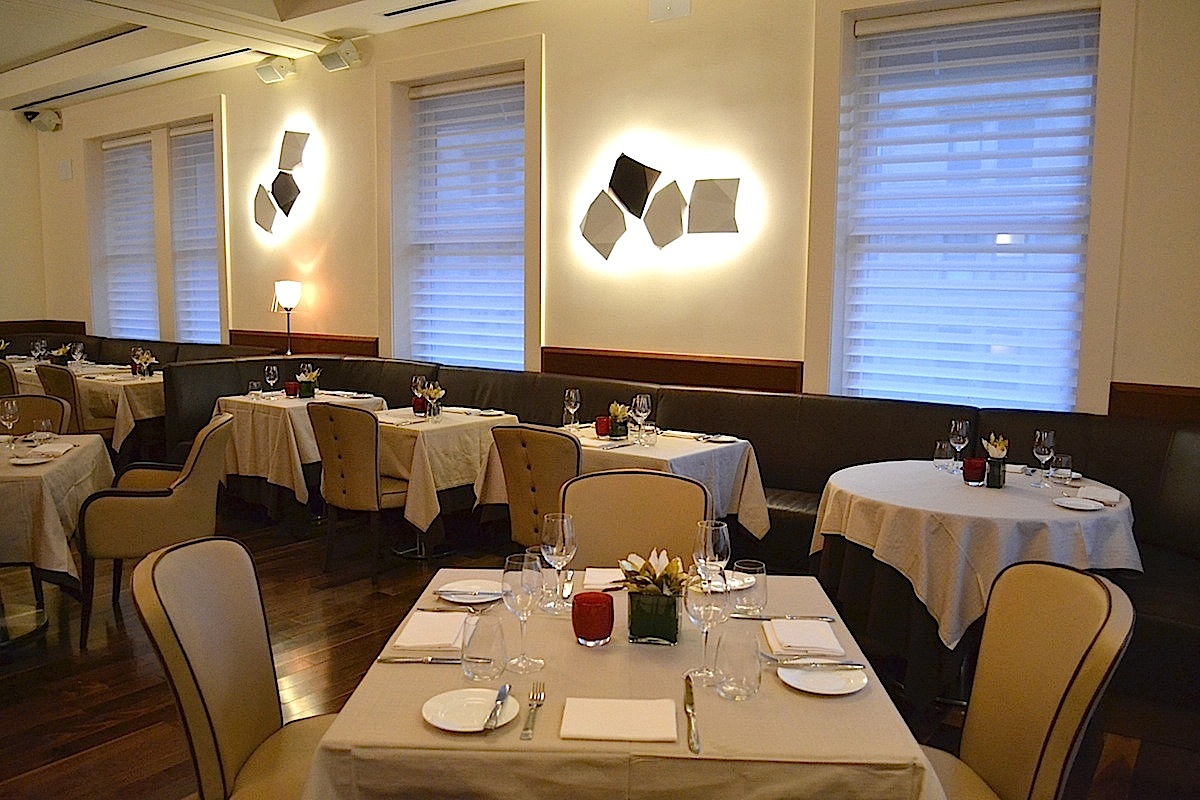 beige; downstairs is the bar (above) and
small dining room, upstairs a larger one, with
well-set tables, fine glassware and crisp
tablecloths (right).
The whipped cream-like chandeliers throw a flat
light, and the rooms could use some color, but the
lighting itself makes it easy to see the well-heeled
and well-dressed clientele that has packed the place
since it opened two months ago.
beige; downstairs is the bar (above) and
small dining room, upstairs a larger one, with
well-set tables, fine glassware and crisp
tablecloths (right).
The whipped cream-like chandeliers throw a flat
light, and the rooms could use some color, but the
lighting itself makes it easy to see the well-heeled
and well-dressed clientele that has packed the place
since it opened two months ago.
As
at his Italian seafood restaurant Marea, White is
offering crudi--Italian
sushi--as
well as pricey caviar, though the menu does not say
where the caviar is from. There is also a slew
of appetizers that include Nantucket bay scallops
(in season) with pistachios and Sicilian herbs, as
well as carpaccio sliced from Piemontese beef and
dressed with squaquerone
cheese and lemon.
Pastas
($22-$29 for full portions) have always been one of
White’s strongest talents, from a simply sauced
rigatoni with tomato pulp and basil to flat paccheri
noodles (below)
with a spicy amatriciana
sauce and morsels of buffalo mozzarella. Tortelloni are
fattened with robiola and mascarpone 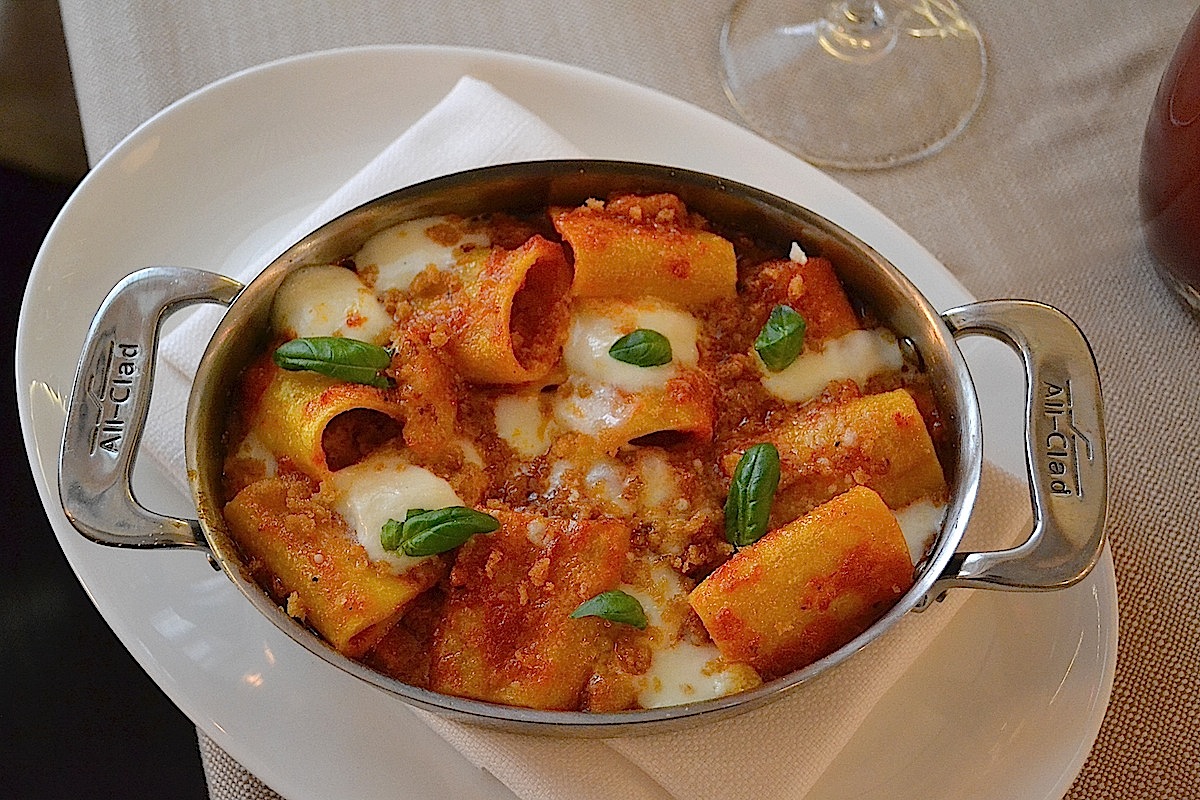 cheeses, then
simply drizzled with butter and sage. Ribbons
of fresh
tagliatelle are treated to wild mushroom
sautéed in garlic and olive oil with parsley,
while the ridged garganelli pick up a hefty long-cooked
bolognese doused with sangiovese wine and a good
dose of Parmigiano cheese. There is also
risotto with lobster and prawns in a coral butter
shot through with cognac.
cheeses, then
simply drizzled with butter and sage. Ribbons
of fresh
tagliatelle are treated to wild mushroom
sautéed in garlic and olive oil with parsley,
while the ridged garganelli pick up a hefty long-cooked
bolognese doused with sangiovese wine and a good
dose of Parmigiano cheese. There is also
risotto with lobster and prawns in a coral butter
shot through with cognac.
Tasting these pastas you are reminded that the best
Italian cooks never elaborate when simplicity if far
more appealing, and that pasta must be treated with
an eye to the shape and texture of the noodles and
stuffed wrappings as much as to the appropriate
sauce. Nothing at Morini seems out of place.
The only disappointment was a classic ferratini alla carbonara,
with warmed egg yolks, guanciale
bacon and pecorino cheese that all together lacked
flavor and was somewhat gummy.
Many people might stop after the pasta dishes, but
there are several excellent “secondi”
main courses ($35-$59) that I recommend, not least
the impeccably grilled duck breast with lusty cotechino
pork sausage, tender lentils, and a huckleberry
sauce. Lamb chops were top quality, dusted and
crusted with pecorino and served with broccoli di
rabe and chickpea polenta scented with rosemary.
Short ribs are luxuriously cooked for
hours in red wine, served with polenta, black
cabbage and a tangy gremolata of hazelnuts for 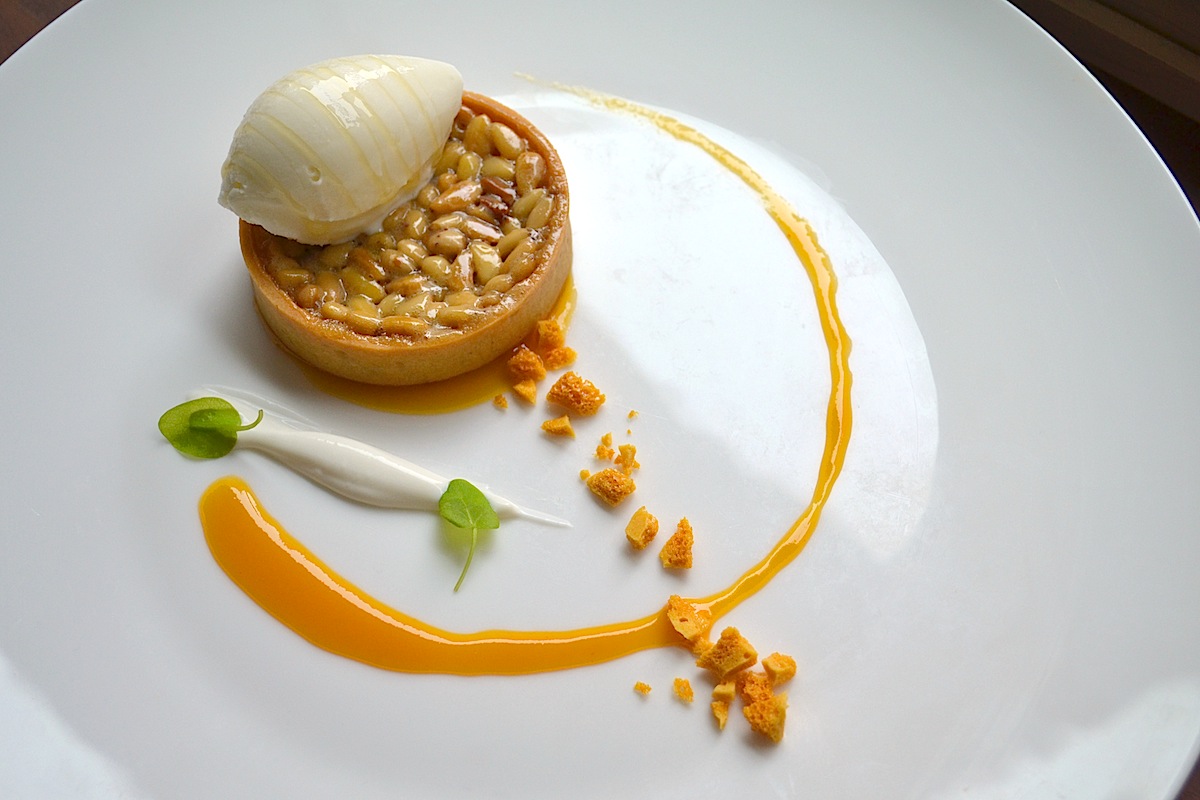 added
texture. A special one evening that
raised some eyebrows about the price was a veal alla milanese
at $59. Even with some black truffles shaved
on top of the dish, that’s a very high figure for
breaded, fried veal cutlet--even more than the now
infamous $54 veal parmigiana at Carbone in Greenwich
Village. Even on the Upper East Side, people
with money sometimes do balk.
added
texture. A special one evening that
raised some eyebrows about the price was a veal alla milanese
at $59. Even with some black truffles shaved
on top of the dish, that’s a very high figure for
breaded, fried veal cutlet--even more than the now
infamous $54 veal parmigiana at Carbone in Greenwich
Village. Even on the Upper East Side, people
with money sometimes do balk.
Desserts,
by patîssier Rowan Johnson and Robert Truitt
($13-$16), are not easily split for two, but you
might try with the cheesecake with gingerbread and a
grapefruit sorbet or the pine nut tartlet with
rosemary meringue and a honey ricotta gelato (right)
It
is not just to White’s credit that he tries to visit
his restaurants on a regular basis and do some
cooking when he’s there, but also to what is largely
an unerring sense of what people have come to expect
in modern Italian cuisine--something White has been
teaching them to appreciate in various forms for
several years now.
Ristorante Morini is open for lunch Mon.-Fri., and for dinner nightly.
❖❖❖
Returning To
Madeira
by Andrew Chalk
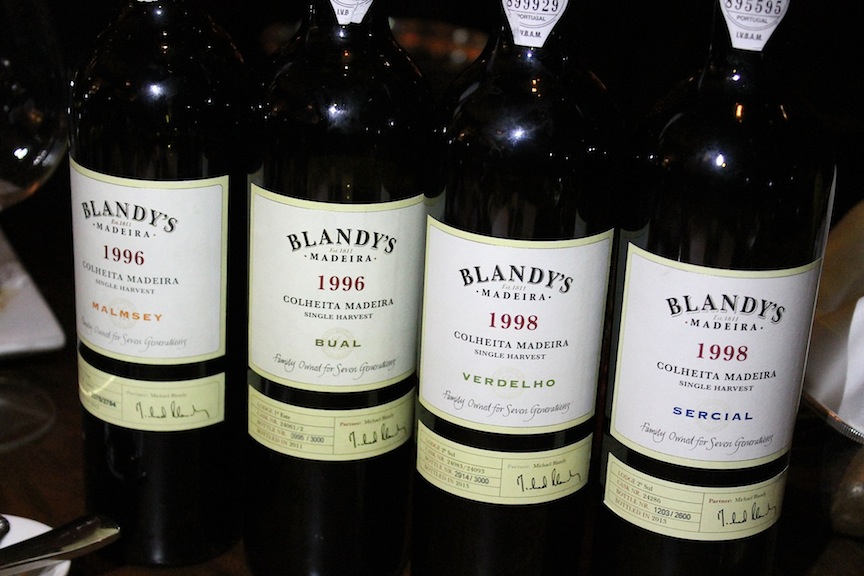 It
is time to
drink more Madeira. That is my conclusion after
Chris Blandy, CEO of Blandy’s,
one of the best Madeira houses, took me through
a tasting of his wines on his
recent swing through town. We have to drink more
because it is a one-of-a-kind
wine that stands out in any tasting you put it
in. It pairs well with countless
foods, or can be quaffed unaccompanied. And its
entry price is moderate, below
$20.
It
is time to
drink more Madeira. That is my conclusion after
Chris Blandy, CEO of Blandy’s,
one of the best Madeira houses, took me through
a tasting of his wines on his
recent swing through town. We have to drink more
because it is a one-of-a-kind
wine that stands out in any tasting you put it
in. It pairs well with countless
foods, or can be quaffed unaccompanied. And its
entry price is moderate, below
$20.
Madeira,
you might surmise
from a Google search, comes from several places
around the world (including
Texas), which is because the name “Madeira” is
not
legally protected in the U.S., as it is in the
E.U. The Madeira that I refer to
here is the original wine from a tiny volcanic
island in the North Atlantic
Ocean named Madeira that is politically part of
Portugal. Here, in sub-tropical
conditions, wine is made mainly from four grapes
that give the four varietal
styles of Madeira wine their names. Sercial
is the grape used to make the driest style. Verdelho is the grape used to make a
style with a small but
detectable amount of sweetness. Bual is
sweeter still. Malmsey (also
called
Malvasia) is the sweetest style. A
fifth grape, Terrantez (below), slots
between Verdelho and Bual on the sweetness scale
and has much to commend it; for
example, it is highly aromatic. However, it
is rare. Some consider it
almost extinct, but Chris Blandy told me that it
is having a slight revival,
noting that “more work needs to be done 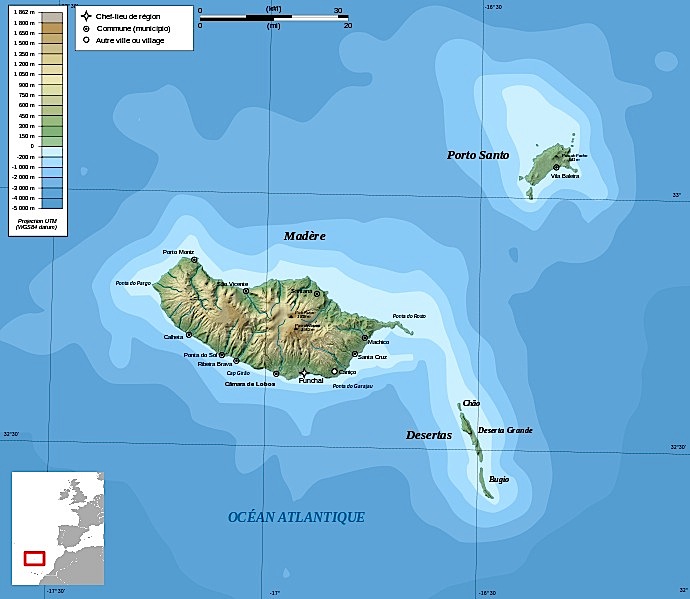 to find a more resistant
and higher
yielding clone.”
to find a more resistant
and higher
yielding clone.”
In the nineteenth century Madeira was the
preferred wine with food in
the U.S., owing to its ability to survive an
arduous Atlantic voyage. So long
was its gastronomic hegemony that the classic
pairings food became fairly
settled. Terrapin soup was thought to be in
harmony with young dry (Blandy’s
3-year old “Duke of Sussex”) or medium dry
(Blandy’s 3-year old
“Rainwater”) styles. If the budget stretched
sufficiently, a 5-year old
(Blandy’s 5-year old) Verdelho was another match.
These are all “blended
Madeiras,” meaning that the age is the
volume-weighted average age of the
grapes in the bottle.
Blandy told me
that it is best if the grapes’ ages all cluster
close to the mean for fear of
introducing incongruous taste notes. So a 5-year
old, for example, is likely to
be made entirely from four- to six-year old
grapes, rather than having trace
amounts of 20-year old fruit.
In Portugal it is common to relax on summer
afternoons with a glass of
Sercial like Blandy’s 5-year old and salty foods
like almonds or walnuts.
Indeed, five year-old Madeira blends of Sercial
and Verdelho may be the most
versatile of all the Madeira variants (and with
the right price too - around
$22.
Blandy’s pairing grid
recommends them with
everything from mayonnaise-based
appetizers, feathered game and fish, even Indian
appetizers. I hazard that
vegetable pakoras and samosas would be good
candidates. Madeira, no matter how
sweet, is characterized by a good acidity level,
which prevents the wine
seeming flabby when confronted with heavy batter.
Think of Sercial with hard
cheeses too, where its nuttiness can match
nuttiness in the cheese. A noted
fromagier, Max McCalman at New York’s Picholine,
has extolled
sheep’s milk cheese
with Sercial.

For East
Asian cuisine, for example the Thai and Vietnamese
food that I
found at Malai, a wine has to handle some hot
spice. They will make the
wine seem dryer, so I would pair a 5-year old
Verdelho (around $20). Since
Verdelho is slightly sweeter than Sercial it will
offset the drying effect.
Sweet desserts warrant Bual and Malmsey
style Madeira, which should be
chosen to be sweeter than the dessert. These also
pair with chocolate (both
dark and milk). In both cases, the aged effect of
older Madeira (Blandy’s
10-year and 15-year) enhances the enjoyment.
The most profound expression of Madeira is
vintage Madeira, whose grapes
come entirely from one vintage and which is aged
in cask for at least 20 years.
Some people do pair these with dried fruit.
In my view, they are such
treasures that they are best sipped without
accompanying food, ideally after a
good meal. At over $100 per bottle I want to savor
every last drop without any
other flavors intervening.
❖❖❖
THE INVENTION OF THE WHEEL, THE INVENTION OF 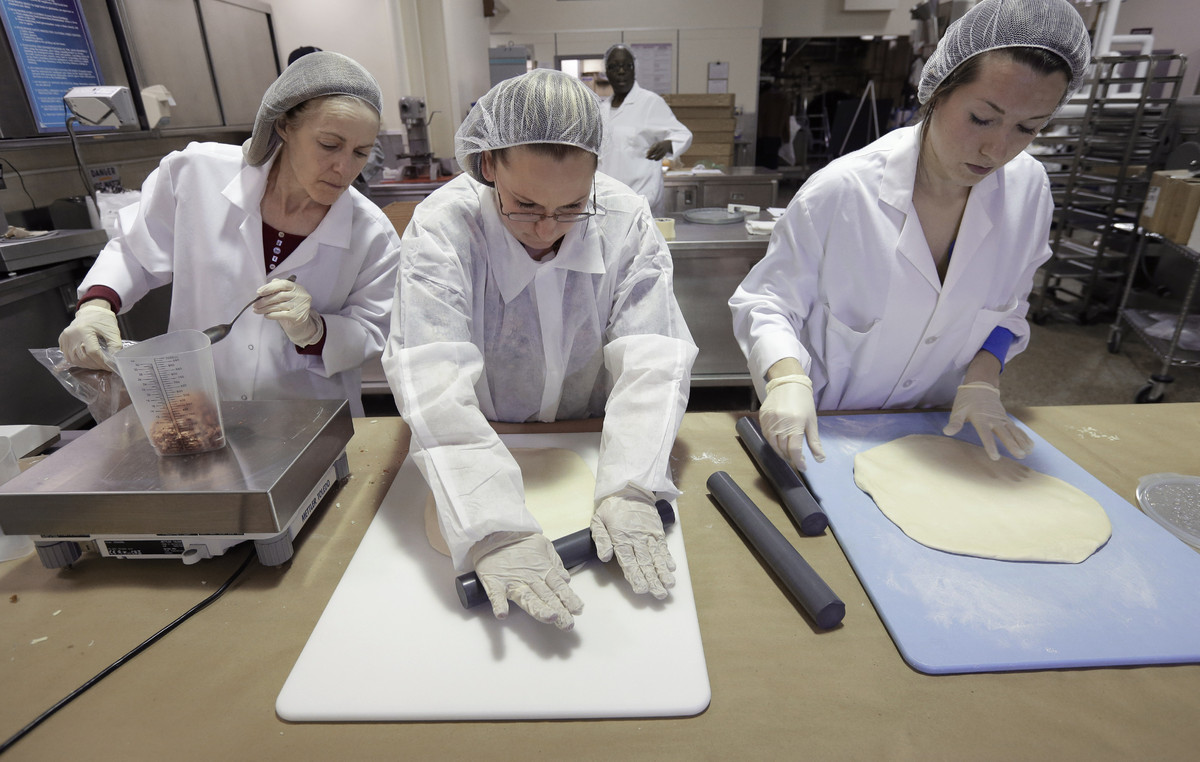
THE PRINTING PRESS, AND NOW. . .
Researchers at a U.S. military lab in are developing a
pizza recipe that doesn't require any
refrigeration or freezing. "You can
basically take the pizza, leave it on the counter,
packaged, for three years and it'd still be edible,"
said Michelle Richardson, a food scientist at the U.S.
Army Natick Soldier Research, Development and
Engineering Center.
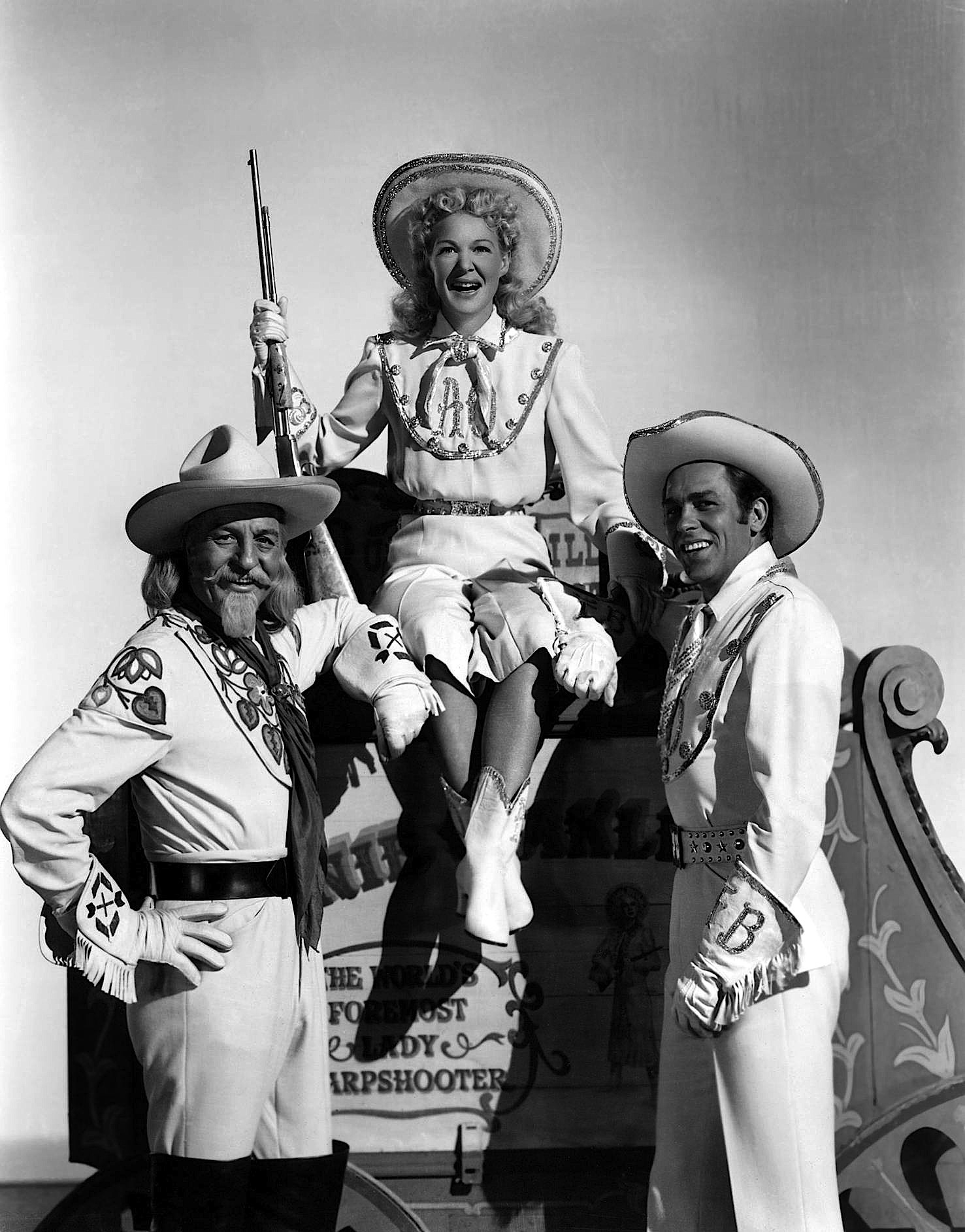
FOOD WRITING 101: IF YOU ARE NOT TRUMAN
CAPOTE, DO NOT TRY WRITING LIKE HIM
“`I go to the Hamptons, but I don’t participate
in the Hamptons' is the sort of thing you’re likely to
overhear at Betony. On a recent evening, a
septuagenarian who could have walked out of an Al
Hirschfeld drawing expressed unadulterated rage at the
mere suggestion that his party of two might not be
seated at the table he desired, because it was meant
for four. His companion, an ash blonde wearing white
stockings, white cowboy boots, and a white fur vest,
stared dully into space as he sputtered. If you live
for people-watching, and for floor-length mink coats,
and for lines like `I don’t want to be on the
family dole,' you’ll be in Heaven at Betony."—Hanna
Goldfield, “Betony,” The New Yorker (3/3/14)
❖❖❖

ANNOUNCEMENT: The 10th annual Savor Dallas,
March 20-22, 2014, celebrates wine, food, spirits and
the arts in downtown Dallas and nearby locations.
"Savor the Arboretum"at the Dallas Arboretum and
Botanical Garden kicks off the festivities with wine
and chef cuisine in the gardens on Thurs., followed by
the popular "Arts District Wine Stroll" on Fri.
Sat. features include a Winemaker Tasting Panel,
a modern mixology seminar, The Reserve Tasting, and
"The International Grand Tasting" offering
cuisine from dozens of the area’s top chefs and more
than 400 premium wines, spirits and craft beers.
Prices for individual events range from $20 to
$150…$365 for a cost-saving weekend package. For tickets
and more information visit www.SavorDallas.com or call 888-728-6747.
Any of John Mariani's
books below may be ordered from amazon.com.
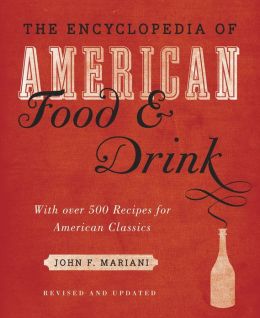 |
The Encyclopedia of American Food
and Drink by John F. Mariani
(Bloomsbury USA, $35) Modesty forbids me to praise my own new book, but let me proudly say that it is an extensive revision of the 4th edition that appeared more than a decade ago, before locavores, molecular cuisine, modernist cuisine, the Food Network and so much more, now included. Word origins have been completely updated, as have per capita consumption and production stats. Most important, for the first time since publication in the 1980s, the book includes more than 100 biographies of Americans who have changed the way we cook, eat and drink -- from Fannie Farmer and Julia Child to Robert Mondavi and Thomas Keller. "This book is amazing! It has entries for everything from `abalone' to `zwieback,' plus more than 500 recipes for classic American dishes and drinks."--Devra First, The Boston Globe. "Much needed in any kitchen library."--Bon Appetit. |
"Eating Italian will never be the same after reading John Mariani's entertaining and savory gastronomical history of the cuisine of Italy and how it won over appetites worldwide. . . . This book is such a tasteful narrative that it will literally make you hungry for Italian food and arouse your appetite for gastronomical history."--Don Oldenburg, USA Today. "Italian
restaurants--some good, some glitzy--far
outnumber their French rivals. Many of
these establishments are zestfully described
in How Italian Food Conquered the World, an
entertaining and fact-filled chronicle by
food-and-wine correspondent John F.
Mariani."--Aram Bakshian Jr., Wall Street
Journal.
"Equal parts
history, sociology, gastronomy, and just
plain fun, How Italian Food Conquered the
World tells the captivating and delicious
story of the (let's face it) everybody's
favorite cuisine with clarity, verve and
more than one surprise."--Colman Andrews,
editorial director of The Daily
Meal.com. "A fantastic and fascinating
read, covering everything from the influence
of Venice's spice trade to the impact of
Italian immigrants in America and the
evolution of alta cucina. This book will
serve as a terrific resource to anyone
interested in the real story of Italian
food."--Mary Ann Esposito, host of PBS-TV's
Ciao
Italia. "John Mariani has written the
definitive history of how Italians won their
way into our hearts, minds, and
stomachs. It's a story of pleasure over
pomp and taste over technique."--Danny Meyer,
owner of NYC restaurants Union Square Cafe,
Gotham Bar & Grill, The Modern, and
Maialino.
|
 |
 |
 |
 |
 |
 |
 |
 |
 Everett Potter's Travel Report:
Everett Potter's Travel Report: 
 Eating Las Vegas
is the new on-line site for Virtual Gourmet
contributor John A. Curtas., who since 1995
has been commenting on the Las Vegas food
scene and reviewing restaurants for Nevada
Public Radio. He is also the
restaurant critic for KLAS TV, Channel 8 in
Las Vegas, and his past reviews can be
accessed at KNPR.org.
Click on the logo below to go directly to
his site.
Eating Las Vegas
is the new on-line site for Virtual Gourmet
contributor John A. Curtas., who since 1995
has been commenting on the Las Vegas food
scene and reviewing restaurants for Nevada
Public Radio. He is also the
restaurant critic for KLAS TV, Channel 8 in
Las Vegas, and his past reviews can be
accessed at KNPR.org.
Click on the logo below to go directly to
his site.

Tennis Resorts Online: A Critical Guide to the World's Best Tennis Resorts and Tennis Camps, published by ROGER COX, who has spent more than two decades writing about tennis travel, including a 17-year stretch for Tennis magazine. He has also written for Arthur Frommer's Budget Travel, New York Magazine, Travel & Leisure, Esquire, Money, USTA Magazine, Men's Journal, and The Robb Report. He has authored two books-The World's Best Tennis Vacations (Stephen Greene Press/Viking Penguin, 1990) and The Best Places to Stay in the Rockies (Houghton Mifflin, 1992 & 1994), and the Melbourne (Australia) chapter to the Wall Street Journal Business Guide to Cities of the Pacific Rim (Fodor's Travel Guides, 1991).


MARIANI'S VIRTUAL GOURMET
NEWSLETTER is published weekly. Publisher: John Mariani. Contributing Writers:
Christopher Mariani,
Robert Mariani, John A.
Curtas, Edward Brivio, Mort Hochstein, Suzanne
Wright, and Brian Freedman. Contributing
Photographers: Galina Stepanoff-Dargery,
Bobby Pirillo. Technical Advisor: Gerry McLoughlin.
© copyright John Mariani 2014
